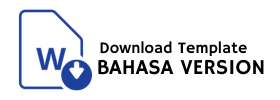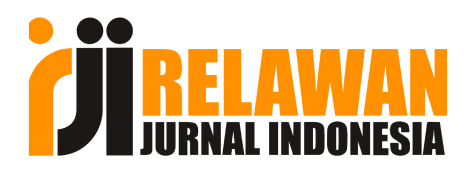The Effect of Safety Training and Technology on Ship Officers Performance and Its Implications on Human Resource Competency on Dynamic Positioning 2 Ship at PT Wintermar Offshore Marine Indonesia
DOI:
https://doi.org/10.38035/jemsi.v6i2.3179Keywords:
Training, Safety Technology, The Performance of Ship Officers, Human Resource CompetenceAbstract
This research aims to analyze the influence of training and safety technology on the performance of ship officers and its implications for human resource (HR) competence on the Dynamic Positioning 2 (DP2) vessel at PT Wintermar Offshore Marine Indonesia. The issues raised include significant investments in training, the use of outdated DP2 technology, and challenges in implementing training and compliance with safety procedures. The population of the study consists of ship crew members on board in 2024, with a sample of 80 Dynamic Positioning Officers (DPOs). The research method employs a quantitative approach, using questionnaires for data collection, and analysis is conducted using SMART PLS. The results indicate that training and safety technology significantly influence the performance of ship officers, positively impacting HR competence. The dimension that best reflects training is the relevance of the material, while for safety technology, the IoT system has a dominant influence. Based on the findings, it is recommended that the company adopt innovative approaches to problem-solving and update the satellite communications system to support field operations.
References
Akindehin, F., Adebayo, O., & Ajayi, O. (2015). Seafarers’ safety. Asia Pacific Journal of Maritime Education, 1(2), 1–6.
Ardiansyah, S. (2023). Manajemen Keselamatan dan Kesehatan. Bandung: Alfabeta.
Arikunto, S. (2015): Prosedur Penelitian: Suatu Pendekatan Praktik. Jakarta: Rineka Cipta.
Armstrong, M. (2021). Armstrong's Handbook of Human Resource Management Practice. London: Kogan Page.
Barasa, L., Sumali, B., Nancy, P., & Cardiana. (2021). The effect of compensation on ships crew performance of floating crane Ratu Giok-2 (case study at PT. Kartika Samudra Adijaya). STIP Jakarta.
Bangun, W. (2012): Manajemen Sumber Daya Manusia. Jakarta: Erlangga.
Becker, B.E., & Huselid, M.A. (2020). High-Performance Work Systems and Firm Performance. New York: Oxford University Press.
Berger, L. (2023). The New Era of Talent Management. Boston: Harvard Business Review Press.
Bhattacharya, S. (2015). Safety culture and safety climate. International Journal of e-Navigation and Maritime Economy, 3(1), 51–70.
Bray, D. (2018). Dynamic Positioning 2(DP2) Operations. The Nautical Institute.
Clarke, S. (2022). Managing Safety: Technology and Systems. London: Springer.
Crouse, D. (2021). Safety Technology in the Workplace. New York: Routledge.
Damayanty, H. (2023). Peningkatan keamanan maritim melalui teknologi deteksi dan pencegahan kapal berbahaya. Jurnal TransBorders, 6(2), 37-44.
Danim, S. (2014): Motivasi Kepemimpinan dan Efektivitas Kelompok. Jakarta: Rineka Cipta.
Fauzi, A. (2021). Pengelolaan SDM dalam Era Globalisasi. Yogyakarta: Penerbit Andi.
Ghozali, I. (2016): Aplikasi Analisis Multivariate dengan Program IBM SPSS 23. Semarang: Badan Penerbit Universitas Diponegoro.
Gordan, P., & Schemmer, J. (2021). Maritime Performance Management. London: Routledge.
Gunawan, A. (2021). Pengembangan SDM dalam Organisasi. Yogyakarta: Penerbit Andi.
Hadi, A. (2023). Pelatihan dan Pengembangan Karyawan. Bandung: Alfabeta.
Hair, J. F. (2017): Multivariate Data Analysis. Harlow: Pearson Education
Haris, F. (2021). Kinerja dan Produktivitas Awak Kapal. Surabaya: Penerbit Unesa.
Harsono et al. (2015): Kepelatihan Olahraga: Teori dan Metodologi. Bandung: Remaja Rosdakarya
Hasibuan, M.S.P. (2014): Manajemen Sumber Daya Manusia. Jakarta: Bumi Aksara.
Herdzik, J. (2012). Possibilities of Improving Safety and Reliability of Ship Propulsion System During DP2 Operations. Journal of KONES Powertrain and Transport, 19(2), 219-226.
Kamis, S., Abdullah, A., & Hassan, A. (2020). Basic training on seafarers’ safety knowledge, attitude, and behavior. Journal of Sustainability Science and Management, 15(6), 145–166.
Kaynak, R., Yildirim, H., & Aydin, S. (2016). Occupational health and safety practices, organizational commitment, work alienation, and job performance. International Journal of Business and Management, 11(5), 146–166.
Lasse, D., Darunanto, D., & Fatimah. (2016). Pelatihan keselamatan bagi anak buah kapal. Jurnal Manajemen Bisnis Transportasi Dan Logistik, 2(2), 257–266.
Lee, J. (2024). Managing Ship Crew and Operations. Boston: Elsevier
Marwan, M. (2022). Manajemen Kompetensi sumber daya manusia. Jakarta: Rajawali Pers.
Malau, A. G. (2023). The Effect of Work-Life Balance on Higher Education Employee Performance: Moderation of Organizational Support and Job Satisfaction Level. Journal of Innovation in Educational and Cultural Research, 4(2), 254–263. https://doi.org/10.46843/jiecr.v4i2.681
Malau, A. G., Barasa, L., & Sumali, B. (2019). Effect of competence and ship crew discipline on performance PT. Myclin Express Offshore. International Review of Management and Marketing, 9(5), 39-46.
Malau, A. G., Barasa, L., & Utami, A. P. (2021). Pengaruh kompetensi dan kompensasi terhadap kepuasan kerja awak kapal PT Amas Iscindo Utama. International Review of Management and Marketing, 11(3), 56-63.
Malau, A. G., Togatorop, A. L., & Sabpatari, F. (2021). Pengaruh kompetensi dan motivasi karyawan terhadap kinerja pelayanan penerbitan sertifikat kapal di Kantor KSOP Khusus Batam. Management Science & Marketing, 14(2), 123-130.
N. H. Meilinasari., Febriansyah, C., & Syahdana, R. (2021). Optimalisasi penerapan ISPS Code untuk meningkatkan keselamatan dan keamanan di atas kapal MV. CK Bluebell. Jurnal Keselamatan dan Kesehatan Kerja, 5(1), 12-20.
NWEA. (2008). NWEA Guidelines for the Safe Management of Offshore Supply and Rig Move Operations Version 2. North West European Area.
Pangestu, Y., & Hermanto, A. W. (2018). Analisis pelatihan ship management guna meningkatkan kualitas kerja awak kapal di PT. Pertamina Perkapalan Jakarta. Jurnal Dinamika Bahari, 9(1), 2218–2226.
Prabowo, B. (2022). Manajemen Operasi Kapal. Jakarta: Gramedia Pustaka Utama.
Rahadi, Dedi, Rianto. 2016. Manajemen Kinerja Sumber Daya Manusia. Cetakan Pertama. Palembang: Tunggal Mandiri Publishing. Noe, R.A. (2020). Employee Training and Development. New York: McGraw-Hill Education.
Ricardianto, E., Prastiama, D., & Kurniawati, I. (2021). The ship’s crew performance of Indonesian national shipping companies. International Journal of Research in Commerce and Management Studies, 3(3), 52–66.
Ricardianto, E., Sakti, A., & Ahmad, B. (2021). Safety and performance in the maritime sector. Journal of Economics, Management, Entrepreneur, and Business (JEMEB), 1(1), 1–11.
Ridwan & Engkos Achmad Kuncoro (2010): Cara Menggunakan dan Memaknai Path Analysis. Bandung: Alfabeta.
Rizki, S. N., & Tipa, H. (2019). Perancangan Artificial Intelligence pada keselamatan pelayaran di Kota Batam. SNISTEK, 2, 199-204.
Rogers, A. (2024). Advances in Safety Technology. Boston: MIT Press.
Rudianto, R., Suhalis, A., & Pahala, Y. (2014). Hubungan kompetensi dan disiplin dengan kinerja awak armada kapal sungai. Jurnal Manajemen Bisnis Transportasi dan Logistik, 1(1), 132–150.
Rudianto, T. (2022). Teknologi Keselamatan Kerja. Jakarta: Salemba Empat.
Sabrina, R., Alifah, H., & Widiastuti, L. (2021). Occupational safety and health, and work environment on employee performance. Global Research on Sustainable Transport & Logistics, 1(1), 207–217.
Sarjito, A. (2023). Peran teknologi dalam pembangunan kemaritiman Indonesia. Jurnal Lemhannas RI, 11(4), 219-236.
Satria, R. (2023). Pengembangan Kompetensi sumber Daya Manusia. Bandung: Alfabeta.
Siregar, V. Selasdini., Haryati, S., & Rizq, M. D. (2021). Pengaruh kebijakan perusahaan mengenai penempatan pelaut berijazah kompetensi kelas III sebagai juru mudi dan juru minyak terhadap pengembangan karir pelaut di atas kapal milik PT Tanto Intim Line. Jurnal Ilmu Pelayaran, 3(1), 25-32.
Sekaran, U., & Bougie, R. (2016): Research Methods for Business: A Skill-Building Approach. Chichester: Wiley.
Smith, R. (2022). Ship Operations and Crew Performance. New York: CRC Press.
Sugiyono (2017): Metode Penelitian Pendidikan. Bandung: Alfabeta.
Sugiyono (2018): Metode Penelitian Kuantitatif, Kualitatif, dan R&D. Bandung: Alfabeta.
Suhartono, A. (2022). Manajemen Sumber Daya Manusia. Jakarta: Elex Media Komputindo.
Sumali, B., Barasa, L., & Gunawan, A. (2021). The influence of ship’s seaworthiness and compensation system towards ship’s crew job satisfaction at PT. Humpuss Bulk Transportation Jakarta. International Review of Management and Marketing, 11(4), 27-34.
Suyadi, Madawanto, Y., & Salim. (2021). Pengaruh pelatihan dan disiplin kerja terhadap kinerja prajurit satuan kapal eskorta Koarmada II. Coopetition: Jurnal Ilmiah Manajemen, XII(2), 279–288.
Triyanto, D. (2015) Bekerja Di Kapal, Penerbit Bandung:Mandar Maju
Tsai, M., & Liou, J. (2017). Work performance of seafarers. Maritime Business Review, 2(1), 36–51.
Ulrich, D. (2021). HR from the Outside In: Six Competencies for the Future. Boston: Harvard Business Review Press.
Watoni, M. (2019). Occupational safety and health, work discipline, and employee performance. International Journal of Economics, Business and Accounting Research (IJEBAR), 3(4), 320–329.
Weda, I. (2022). Analisis faktor yang mempengaruhi keselamatan pelayaran (Studi Pada KSOP Tanjung Wangi). EBISMEN, 1(1), 92-108.
Widianto, H. (2023). Pengelolaan Kinerja perwira kapal. Bandung: Alfabeta.
Wright, P.M. (2023). The Impact of Human Resource Management on Organizational Performance. Cambridge: Cambridge University Press.
Yuen, K. F., & Liu, J. (2018). Satisfaction and performance of seafarers. Transportation Research Part A: Policy and Practice, 110(1), 1–34.
Yulianto, H. (2021). Sistem Keselamatan dan Kesehatan Kerja. Surabaya: Penerbit Unesa.
Downloads
Published
How to Cite
Issue
Section
License
Copyright (c) 2024 Arifianto Arofah Inada, Damoyanto Purba, Didik Sulistyo Kurniawan, Bambang Sumali

This work is licensed under a Creative Commons Attribution 4.0 International License.
Hak cipta :
Penulis yang mempublikasikan manuskripnya di jurnal ini menyetujui ketentuan berikut:
- Hak cipta pada setiap artikel adalah milik penulis.
- Penulis mengakui bahwa Jurnal Ekonomi Manajemen Sistem Informasi (JEMSI) berhak menjadi yang pertama menerbitkan dengan lisensi Creative Commons Attribution 4.0 International (Attribution 4.0 International CC BY 4.0) .
- Penulis dapat mengirimkan artikel secara terpisah, mengatur distribusi non-eksklusif manuskrip yang telah diterbitkan dalam jurnal ini ke versi lain (misalnya, dikirim ke repositori institusi penulis, publikasi ke dalam buku, dll.), dengan mengakui bahwa manuskrip telah diterbitkan pertama kali di Jurnal Ekonomi Manajemen Sistem Informasi (JEMSI).











































































